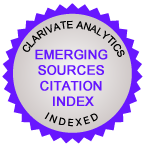Стратегическая ориентация музеев в условиях неопределенности
DOI:
https://doi.org/10.21638/spbu18.2024.402Аннотация
Цель исследования: изучить стратегическую деятельность музеев и сравнить влияние двух стратегий, чтобы проверить, как ориентация, направленная на сохранение наследия, и рыночная ориентация способствуют развитию технологических инноваций и достижению экономического результата деятельности под влиянием воспринимаемой неопределенности окружающей среды.
Методология исследования: исследование основано на данных опроса директоров музеев (n = 197) с применением моделирования структурным уравнением методом частичных наименьших квадратов.
Результаты исследования: исследование показало, что направленная на сохранение наследия стратегия не имеет статистически значимого влияния на результат деятельности музея и развитие технологических инноваций. Рыночная ориентация положительно влияет на технологические инновации и результат деятельности музея. Уровень воспринимаемой неопределенности внешней среды не оказывает воздействия на связь между ориентацией музея на сохранение наследия и развитием технологических инноваций. Напротив, воспринимаемая неопределенность окружающей среды модерирует связь между рыночной ориентацией и технологическими инновациями.
Оригинальность и значимость результатов: исследование вносит вклад в существующие знания о стратегических ориентациях, противопоставляя эффекты рыночной ориентации и ориентации, направленной на сохранение наследия. Также статья оценивает влияние этих ориентаций на экономическую эффективность работы музея. В отличие от большинства существующих исследований работа вносит вклад в растущий массив литературы, акцентируя внимание на влиянии внешней среды на стратегическую деятельность музеев.
Ключевые слова:
стратегические ориентации, технологические инновации, эффективность работы музея, воспринимаемая неопределенность среды, музей
Скачивания
Библиографические ссылки
References
Загрузки
Опубликован
Как цитировать
Выпуск
Раздел
Лицензия
Статьи журнала «Российский журнал менеджмента» находятся в открытом доступе и распространяются в соответствии с условиями Лицензионного Договора с Санкт-Петербургским государственным университетом, который бесплатно предоставляет авторам неограниченное распространение и самостоятельное архивирование.





